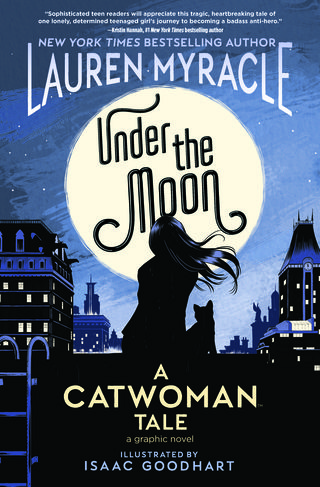Trauma
Catwoman and Post-Traumatic Growth
What the new Catwoman origin story teaches us about post-traumatic growth.
Posted May 9, 2019

Catwoman is one of the most fascinating DC characters. Sometimes she is a hero, sometimes a villain. One thing is for certain: Catwoman (real name Selina Kyle) plays by her own rules.
But where did she come from? How did Selina Kyle become Catwoman and why? Lauren Myracle’s new graphic novel, “Under the Moon” answers these very questions. In this graphic novel (released May 7, 2019), we learn about Selina Kyle’s origin story, which covers such topics as child abuse, bullying, homelessness, and self-harm.
In an exclusive interview with Psychology Today, author Lauren Myracle discusses her DC debut graphic novel. Myracle reported that she was initially invited to submit a proposal for Poison Ivy’s origin story and was then invited to write Catwoman’s origin story instead. “My jaw dropped. I was amazingly thrilled and amazingly terrified... It was a dream come true.” Myracle mentioned that the character spoke to her because of Kyle’s affinity for cats, the night, the moon, and someone who is “solitary but is looking for a connection.”
Selina Kyle’s origin story starts out in an abusive household in which she is exposed to violence and numerous forms of abuse. After going through a number of traumatic experiences, Selina runs away from home, often suffering from hunger, cold, and loneliness. “What went on in that house was bad enough that she wanted to leave. She chose to be homeless over being in the environment that she was in,” Myracle says.
At one point in the novel, Selina is so heartbroken that she engages in self-harm. Myracle talks about self-harm based on her own experiences in the past. She states that she wanted to reduce the shame about this behavior and start an open dialogue about it: “For kids who’ve been in that kind of a situation, I wanted them to know that they are not alone.”
As the novel continues, Selina learns coping behaviors to help her manage her emotional pain and meets a group of other children who become her surrogate family. One of them, Rosie, is a small non-verbal child who attaches herself to Selina. In taking on the role of Rosie’s older sister, Selina learns to open up about her past experiences and learns to love and trust other people. “When Selina makes a connection with Rosie, she realizes that the world she grew up in sucked but that she can create a beautiful world for herself and someone else now.”
“Under the Moon” is not only Catwoman’s origin story, it is the story of many teenagers, it is the story of feeling alone, it is the story of experiencing the kinds of horrors that many children go through, it is the story of finding a “chosen family” and developing a sense of post-traumatic growth—a kind of new life-purpose, a positive change that can take place after someone undergoes a traumatic experience.


